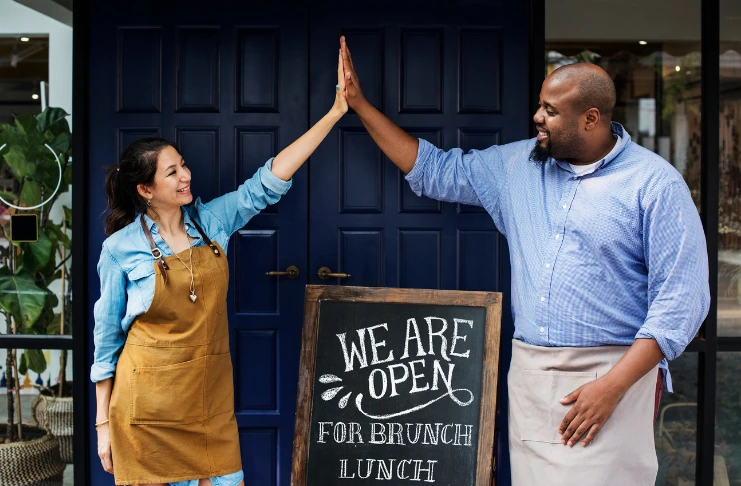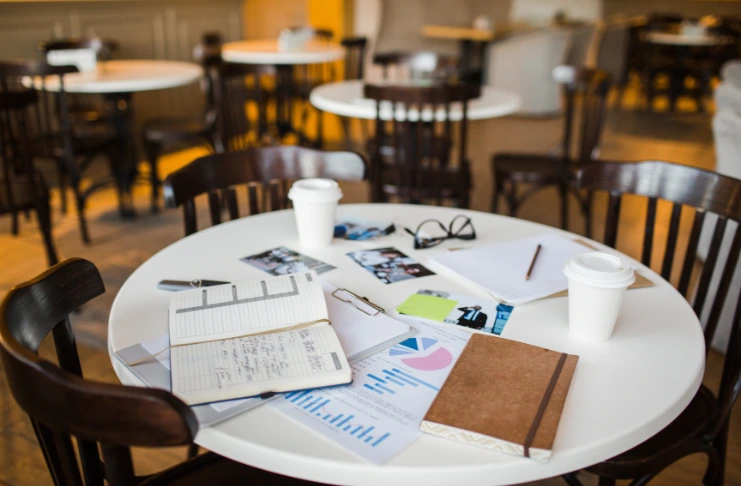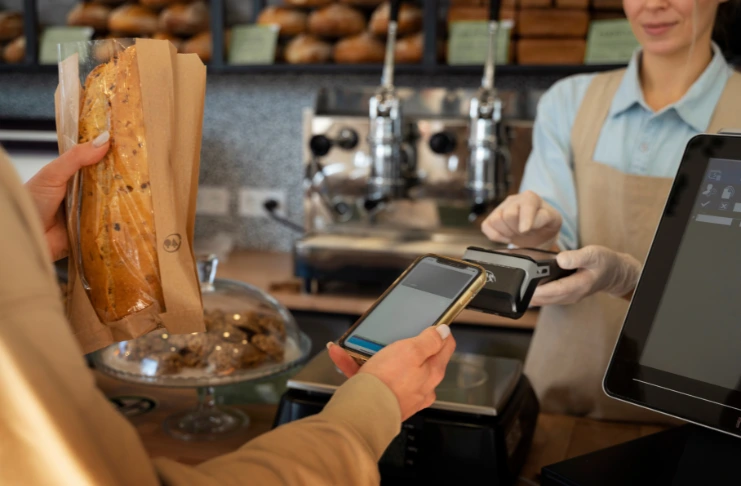
Opening a restaurant in the UK is a dream for many aspiring entrepreneurs and culinary creatives, but turning that dream into reality requires more than just passion and a great menu. In 2025, the landscape of the food industry continues to evolve, shaped by shifting consumer habits, rising operational costs, and new regulations.
Whether you’re planning a cozy café in a quiet village or a trendy eatery in the heart of London, understanding the financial commitment is crucial. From leasing premises and securing business licenses to staffing, equipment, and marketing, every decision impacts your bottom line. This guide breaks down the key expenses involved in launching a restaurant in the UK today, offering insights to help you budget wisely and avoid costly surprises.
UK Restaurant Landscape 2025
- Market value & growth: Hospitality sales are forecast to top £98 billion in 2025, buoyed by a 7.4 % CAGR in fast-casual and delivery-first brands.
- Consumer habits: Food-delivery penetration is expected to hit 63.7% of UK diners this year, and restaurants that integrate online ordering typically boost revenue by 42% in year one.
- Cost pressures: Prices in restaurants and cafés rose 8.2 % YoY to January 2024, meaning tighter margins unless you control food costs, drink costs, wages, and energy.
- Policy shifts: Eligible hospitality sites now enjoy 40 % business-rate relief with a £110k cap under the 2025/26 scheme.
Core Cost Categories & 2025 Benchmarks
1. Premises, Fit-Out & Build
- Lease or purchase? London averages £47 / sq ft for shell space, while Manchester starts around £21 / sq ft. Location, footfall, and unit condition swing totals.
- Fit-out range: £1,000–£3,000 / m². Drivers include design scope, M&E, extraction, fire suppression, compliance upgrades, and reuse of existing fixtures.
- Back-of-house build: A full commercial kitchen typically runs £190–£250/sq ft when you include kitchen equipment, ventilation, refrigeration, drainage, and power upgrades.
- Finance choice: If buying, expect commercial mortgage interest around 6–14% APR, roughly £6k–£9k annual repayment for every £100k borrowed.
- Plan cash flow: Map rent, service charges, business rates, and staged build payments to your opening timeline; hold a sensible contingency to absorb variations.
2. Licensing, Permits & Legal
Every UK operator must secure:
- Register as a food business (free): Notify your local authority at least 28 days before trading.
- Premises licence (alcohol): Application fees typically £100–£635; ongoing annual fees £70–£350 based on rateable value.
- Music licensing (PRS/PPL): Most venues playing recorded music need TheMusicLicence; expect £210+ per year, varying by size, hours, and usage.
- Pavement licence (al-fresco): England cap £500 for new applications (£350 renewals); local rules may specify furniture layouts and trading hours.
- Budgeting: Bundled one-time costs (forms, plans, legal help) typically £2,000–£4,000, plus yearly renewals and training refreshers.
- Health & safety compliance: Written risk assessments, fire precautions, allergen management (Natasha’s Law), and food-hygiene procedures are mandatory.
3. Labour & Payroll
The new £12.21 National Living Wage (21+) adds ~10 % to payroll vs. 2024. Include National Insurance, pension auto-enrolment, and onboarding time. For a 40-seat casual venue, expect salary outgoings of £395k-£420k a year, equal to 28–32 % of projected revenue. This includes:
- Wage baseline: NLW £12.21 (21+); expect knock-on rises for chefs, supervisors, managers.
- On-costs to include: Employer NICs, auto-enrolment pension (min 3%), holiday pay, sick pay.
- Staffing model: Map FTEs and part-timers by daypart; create rota templates; pay for onboarding time.
- Recruitment & retention: Ads, trials, referral bonuses; career paths and recognition to reduce churn.
- Training & compliance: Food safety, allergens, H&S; paid training shifts and certifications.
- Scheduling discipline: Demand-led rotas, minimise overtime/agency; track labour % and sales per labour hour.
4. Cost of Goods Sold
COGS and the food cost ratio is make-or-break for margins. As a rule of thumb, target food costs around 28–32% of food sales and beverage costs near 18–24%. Here are a few tips:
- Standardise recipes and portion sizes; weigh/pre-portion and use jiggers/shot measures.
- Menu-engineer for contribution margin; promote high-margin items and trim low performers.
- Negotiate purchasing (multi-site tenders, seasonal swaps); lock prices where possible.
- Count inventory weekly; use FIFO, set pars, and track stock turns and expiry.
- Measure yield per kilo (butchery, trimming, cooking loss); optimise batch prep.
- Reduce waste and shrink: bin cards, log comps/voids, restrict access to high-value stock.
- Monitor theoretical vs actual COGS; keep variance under 2–3% and act fast on gaps.
5. Equipment & Technology
Setting up your kitchen and tech systems is a major investment when opening a restaurant. Brand-new kitchen equipment can cost anywhere from £40,000 to £200,000, depending on the size and style of your operation. To save money upfront, many owners now choose to lease equipment or buy refurbished items from a food supplier under a Clean-Test-Repair model, which helps reduce startup costs.
In addition to cooking gear, you’ll need modern technology to run your business smoothly:
- £6,000–£12,000 for POS systems, self-service kiosks, and handheld devices.
- Integration with online ordering platforms is essential for delivery and takeaway.
- Smart tech helps streamline operations and improve customer experience.
6. Utilities & Overheads
Managing utility costs is crucial for keeping your restaurant profitable. Unlike households, commercial users don’t have an energy price cap, so rates can fluctuate significantly. It’s smart to lock in contracts early to avoid sudden price hikes and keep expenses predictable. Here’s a quick breakdown of typical rates as of 2025:
- Electricity: Average rate is 53.37 p/kWh for small businesses.
- Gas: Usually ranges between 11–15 p/kWh.
These overheads can add up quickly, especially in energy-intensive kitchens. Choosing energy-efficient appliances and monitoring usage can help reduce bills. Planning ahead and negotiating fixed-rate contracts gives you more control over monthly costs and protects your bottom line.
7. Insurance & Risk
Insurance is essential to protect your restaurant from unexpected events like accidents, injuries, or legal claims. While basic coverage starts around £500, full protection, covering public liability, employer liability, and more, can cost £3,500–£4,000 annually. To stay safe and compliant, budget at least £300 per month for insurance. Key coverage areas include:
- Public liability: Protects against customer injuries or property damage
- Employer liability: Required by law if you hire staff
- Business interruption: Covers lost income during closures
- Contents and equipment: Safeguards your assets
8. Marketing & Launch

Marketing plays a key role in attracting customers and building your restaurant’s reputation. Most independent restaurant owners in the UK allocate around 3–6% of their annual revenue to marketing. This investment is especially important during the launch phase, when you need to create buzz and get people through the door.
In 2024, 84% of UK restaurateurs spent the majority of their marketing budget on social media, using platforms like Instagram and Facebook to promote menus, drive bookings, and boost online orders. Here are some effective ways to use your marketing budget:
- Social Media Advertising: Run targeted ads to reach local diners
- Content Creation: Share photos, videos, and behind-the-scenes stories
- Influencer Partnerships: Collaborate with food bloggers or local creators
- Online Listings: Ensure your restaurant is visible on Google and review sites
- Email Campaigns: Send updates, offers, and event invites to subscribers
- Launch Promotions: Offer discounts or freebies during opening week
- Loyalty Programs: Encourage repeat visits with rewards and perks
9. Working Capital & Contingency
Set aside 10–15 % of the entire initial investment as “rainy-day” funds for unexpected costs from fryer breakdowns to rent reviews. This safety net helps you handle surprises without disrupting daily operations or cash flow. Common unexpected costs related to running a restaurant include:
- Equipment breakdowns: Repairs or replacements for fryers, ovens, or fridges
- Rent increases: Sudden changes after lease reviews or renewals
- Staffing issues: Covering costs for temporary staff or overtime
- Supply chain delays: Paying extra for urgent deliveries or substitutions
- Licensing or compliance fees: Updates to meet new regulations
- Emergency maintenance: Plumbing, electrical, or pest control fixes
In addition to contingency funds, maintaining working capital ensures you can cover routine expenses like wages, utilities, and inventory while waiting for revenue to grow. It gives you breathing room during slow periods or seasonal dips.
Having this financial cushion reduces stress and keeps your business stable. It’s not just about preparing for the worst; it’s about being ready for anything. A well-funded backup plan can be the difference between bouncing back and shutting down when challenges arise.
INDUSTRY INSIGHT
Will Beckett, co-founder of Hawksmoor, highlights the importance of financial clarity when launching a restaurant: “You have to get your head around the numbers quickly. Instinctively, if you’re from London, you don’t believe the numbers you hear.”
His comment reflects the shock many restaurateurs face when confronted with the true scale of opening costs, especially outside familiar markets. Whether launching in the UK or abroad, Beckett’s insight underscores the need for accurate budgeting and a grounded understanding of location-based cost variations. It’s a reminder that gut instinct must be backed by solid financial planning.
Regional Cost Variations
Where you open your restaurant in the UK can dramatically affect your startup costs. Rent is the biggest variable, expect to pay around £28/sq ft in Leeds, but up to £87/sq ft in central London. Some areas offer financial perks:
- Scottish freeports: Business rates holidays for new ventures
- Wales tourism zones: Grants up to £10,000 for energy-efficient fit-outs
- Northern regions: Generally lower property and staffing costs
Choosing the right location isn’t just about foot traffic—it’s also about balancing costs and taking advantage of local incentives that can ease your financial burden.
Sustainability & ESG Expenses
Eco-friendly operations are no longer optional; they’re part of UK regulations and customer expectations. With the ban on single-use plastics, restaurants must switch to compostable packaging, which costs 25–40% more. New food-waste rules require a written reduction plan by March 2026. To offset costs, consider:
- Green loans at 5.5% APR for energy upgrades
- LED retrofits that save 18–22% on utility bills over five years
- Building a brand that aligns with environmental and social values
Financing Your Dream

Funding your restaurant goes beyond traditional bank loans. The British Business Bank’s Recovery Loan Scheme offers up to £2 million with 6-year terms, available to hospitality businesses until December 2025. Other financing options include:
- High-street lenders for smaller startup loans
- Private investors who favour data-driven, scalable concepts
- Crowdfunding if your brand has strong community appeal
Hidden & Ongoing Expenses
Running a restaurant isn’t just about the big upfront costs: there are many smaller, ongoing expenses that can quietly drain your budget if you’re not prepared. These hidden costs often catch new owners off guard and can seriously affect their cash flow over time. Here are some key examples to watch out for:
- PRS/PPL renewals: These are annual music licensing fees if you play music in your venue.
- Menu reprint fees: Every time allergen laws change or you update dishes, you’ll need new menus.
- Equipment maintenance contracts: Expect to pay around 3% of your equipment’s original cost each year to keep things running smoothly.
- Shrinkage and stolen glassware: Lost items may seem minor, but they add up especially in busy bars.
- Card-processing fees: If more than half your revenue comes from online orders, these fees can rise sharply.
Cost-Saving & Risk-Mitigation Tips
Opening and running a restaurant comes with financial risks, but smart strategies can help you save money and avoid unpleasant surprises. By planning ahead and using clever tools, you can keep costs under control and protect your business from sudden shocks. Here are some practical tips to help you stay financially stable:
- Negotiate staged rent increases: Link rent hikes to the Consumer Price Index (CPI), so your costs rise gradually and predictably, avoiding sudden jumps.
- Lease or refurbish kitchen equipment: Instead of buying everything new, consider leasing or upgrading second-hand gear. This reduces your upfront investment and frees up cash for other needs.
- Bundle insurance and utility contracts: If you run multiple locations, combining these services can unlock bulk discounts and simplify management.
- Use AI-based forecasting tools: These help you match staff schedules to customer demand, cutting down on unnecessary wage costs and improving efficiency.
- Join supplier co-ops: By teaming up with other restaurants, you can negotiate better prices on food and drinks, helping you meet your target margins.
Complete Cost Checklist
Area | Examples | Notes |
Premises | Deposit, legal fees, refit | 20–35 % of total startup costs |
Construction | HVAC, extraction, bar build | See £1,000–£3,000 / m² range |
Kitchen equipment | Ranges, walk-in fridge, KDS | £40k–£200k |
Initial inventory | Dry, fresh, bar stock | 1–2 weeks COGS |
Staff | Recruitment, training, uniforms | Payroll taxes add 13.8 % |
Insurance costs | Public & employer liability | £500–£4k pa |
Tech & online ordering | POS, website, apps | £6k–£12k |
Marketing costs | PR, social media, launch party | 3–6 % revenue |
Utility costs | Gas, electric, water | Lock-in dual-fuel contracts |
Contingency | Unexpected costs, repairs | 10–15 % of budget |
Conclusion
Opening a restaurant in 2025 typically costs between £250,000 and £1 million. The final amount depends on where you set up, the type of restaurant you want to run, and how large or ambitious your plans are. Big cities like London will cost more, while smaller towns may offer savings. To succeed, it’s important to carefully plan your spending, which includes food and drink costs, rent, marketing, and other essentials. You should also keep extra funds aside for unexpected expenses. Starting with a realistic budget, choosing smart loan options, and closely watching your spending can help you avoid common pitfalls in your first year.
Frequently Asked Questions
Concept drives the number. Café-style operations often launch on £150k–£300k, mainstream casual dining needs £300k–£600k, while high-end or fine-dining ventures require £600k–£1 million. Figures cover fit-out, kitchen equipment, initial inventory, and three months’ working capital; location, wage level, and energy contracts can swing outlays significantly in either direction too.
Some founders bootstrap by taking over an equipped site and buying used kit, opening for as little as £40,000; anecdotal stories dip to £20,000. Such shoestring budgets rely on sweat equity, short leases, and tiny menus, leaving little contingency and high risk of early cash-flow failure.
Takeaway-only formats avoid front-of-house costs, so initial investment typically falls between £40,000 and £150,000. That covers small premises, extraction, compact kitchen equipment, delivery tech, first stock, and packaging. Add platform commissions and marketing, but savings in furniture and service staff improve cash-flow speed to break even.
A realistic floor for a compliant micro-café is roughly £50,000–£70,000 if you inherit ventilation, electrics, and toilets from the previous tenant. Budgets below that risk legal shortcuts, unreliable equipment, and zero working capital—common reasons very small restaurants close within their first year despite owner passion and effort.
Building a branded counter-service unit usually costs between £100,000 and £350,000. Franchise sheets quote £145k–£200k for Auntie Anne’s kiosks, while Domino’s pegs a full pizza outlet at about £280,000 including fit-out, equipment, and opening inventory. Independent operators can hit the lower end by leasing second-hand kitchen equipment strategically.
Fast-food ventures cost less than full-service but still demand capital. Allow £150,000–£300,000 for premises, fryers, ventilation, POS, and launch marketing. Domino’s lists £280,000, while lower-cost pizza or chicken delivery franchises advertise entry packages from roughly £120,000. Always add a three-month cash buffer for rent, wages, and utilities coverage.
London premiums inflate every budget line. Guides place total launch spend between £200,000 and £1 million, with Soho or Mayfair sites often topping £500,000 thanks to rents above £200 per square foot. Higher fit-out labour, business rates, and licensing add further pressure, so raise contingencies by roughly 15 % to absorb unforeseen overspends easily.









